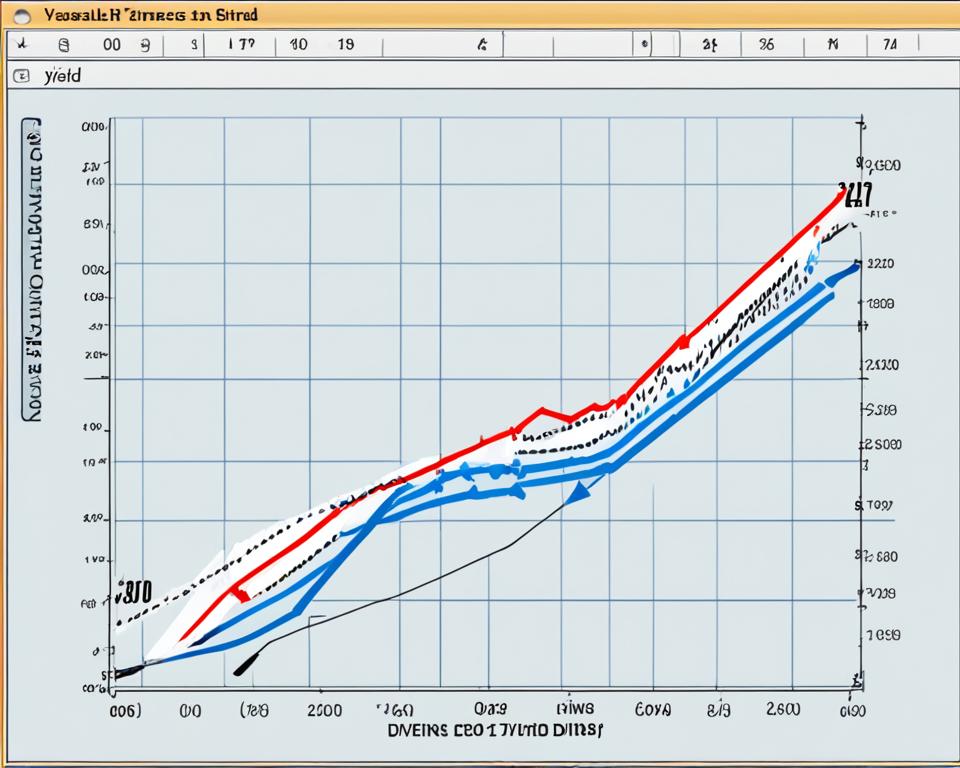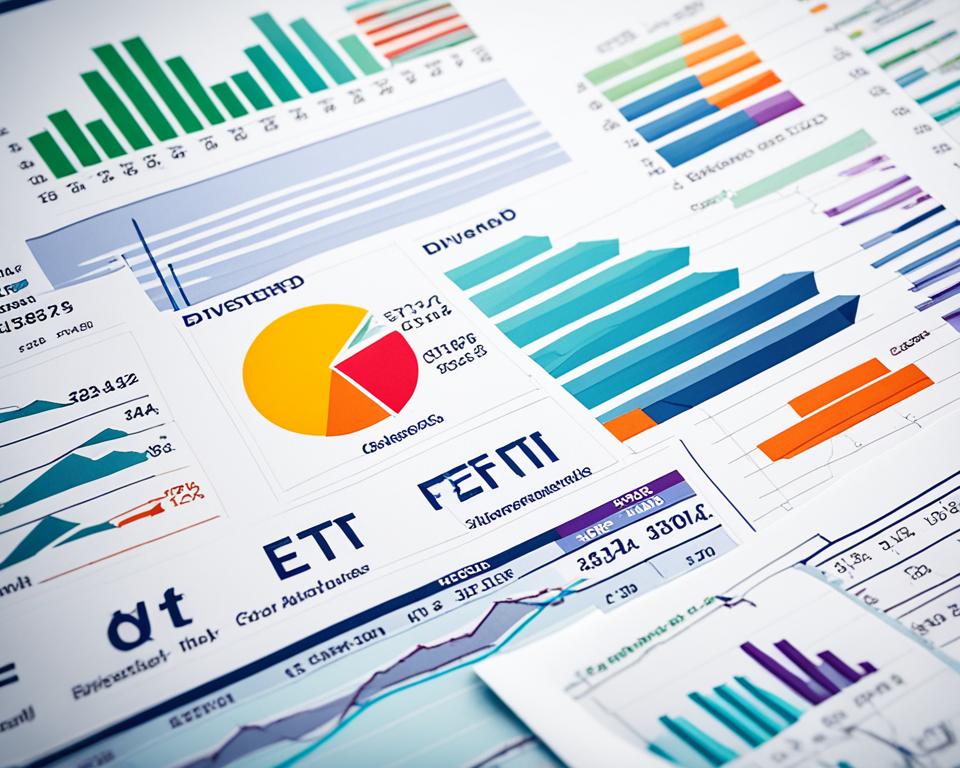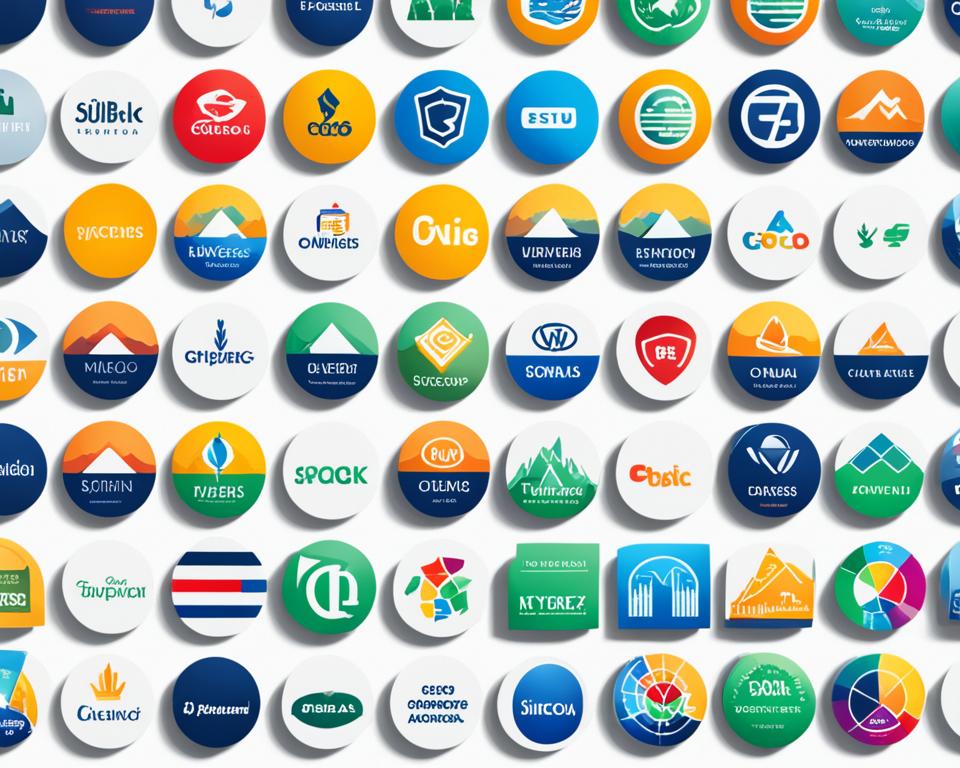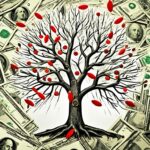When you dive into the world of investing, understanding certain metrics can be the key to unlocking potential profits. Let’s explore one such critical financial ratio—dividend yield. So, what is dividend yield exactly? It’s a ratio that tells you how much a company pays out in dividends each year in relation to its stock price, providing insight into the income you might expect from your investment. The beauty of this ratio lies in its simplicity and the powerful data it conveys about a company’s financial health.
But how to calculate dividend yield? Fear not! The dividend yield formula is straightforward—even if math isn’t your strong suit. By dividing the annual dividends per share by the price per share, you can swiftly gauge the yield. It’s vital to understand, however, that while a high dividend yield may be alluring, it doesn’t always equate to a great investment. Sometimes, it’s a red flag signaling a possible drop in stock price. Whether you’re a seasoned investor or just starting, peeling back the layers of the dividend yield definition can illuminate the path to wiser investments.
Key Takeaways
- The dividend yield is measured as a percentage, offering a glimpse into the annual return on investment from dividends relative to the stock price.
- Understanding how to calculate dividend yield is essential for assessing a stock’s income-producing potential.
- Mature companies typically provide higher dividend yields, useful for those seeking steady income.
- Be cautious: A high dividend yield isn’t always a sign of strength—it could point to a decreasing stock price.
- Correctly interpreting dividend yield data can lead to more informed, savvy investment decisions.
Decoding Dividend Yield: A Comprehensive Overview
As a compass guides a sailor, understanding the importance of dividend yield can navigate an investor through the complex sea of stock market investing. Dividends represent your share of a company’s profits, and the yield paints a vivid picture of the income they generate in relation to the investment’s price. In essence, calculating dividend yield informs you whether a stock contributes a worthwhile stream of cash relative to the capital invested.
The concept takes on even greater significance when you examine dividend yield vs. dividend growth. While dividend yield focuses on the here and now of investment return, dividend growth looks ahead, signaling a company’s future promise. The yield attracts those seeking immediate returns, but growth can allure those with an eye on increasing payouts over time.
The Basics of Dividend Payments
Dividends, essentially portions of a company’s profit shared with its owners, are a key driver for those investing for income. Companies with a long track record, often boasting the best dividend yield stocks, provide shareholders with regular returns on investment. Typical examples include utilities and consumer staples, sectors known for their stability and consistent payout history.
How Dividend Yield Reflects Investment Returns
Dividend yield is when the investor’s arithmetic becomes real. While tech novices experiencing rapid growth often reinvest earnings back into the business, mature enterprises dish out higher dividends to their stockholders. Yet, with every increase in stock price, yields naturally deflate. Therefore, a rising yield may be a double-edged sword, hinting either at a generous payout or a concerning dip in share value.
Now, let’s place some of the top dividend-yielding stocks under the microscope:
| Company | Sector | Annual Dividend per Share | Price per Share | Dividend Yield |
|---|---|---|---|---|
| AT&T Inc. | Telecommunications | $2.08 | $28.15 | 7.38% |
| Exxon Mobil Corporation | Energy | $3.48 | $61.41 | 5.67% |
| Coca-Cola Company | Consumer Staples | $1.68 | $54.77 | 3.07% |
A discerning investor will look beyond the raw percentages, deciphering whether the yield stems from robust dividends, as seen in these stalwarts, or a worrying slide in stock price. Recognizing the distinction is central to making informed and fruitful investment decisions.
What is Dividend Yield
At the heart of savvy investing lies the dividend yield definition, a crucial indicator for those looking to bolster their portfolios with stocks that potentially pay out regular earnings. Imagine being able to determine at a glance how much cash you could earn relative to the price of a stock in your investment venture into the market. That’s the superpower afforded by understanding dividend yield, a term widely used in the realm of high dividend yield investing.
The attractiveness of a stock that offers a consistently high dividend yield can be a beacon for income-focused investors. But, it’s essential to note that while established companies often boast generous yields, such an indicator is not always the gold standard for investment quality. An elevated yield could reflect a declining stock price, creating a siren song that lures the unwary onto financial rocks.
Thus, your initial instinct might be to lean towards stocks with substantial dividend yields, but there’s an art to parsing these figures accurately. Yield, after all, is a snapshot—a moment in time that demands context. Is a particular stock trading at a low price because of market jitters, or is there a fundamental weakness lurking beneath the surface? By deciphering the true nature of a stock’s dividend yield, you empower yourself to make more informed investment decisions.
With this wisdom in hand, you can assess when a high dividend yield is the promise of a steady, reliable income stream, and when it might be a red flag signaling deeper issues within a company. In their pursuit of financial stability and growth, investors should consider dividend yield as one tool among many—one thread in the tapestry of investing strategies that can lead to success in the market.
At each market turn, it behooves the investor to ask: Is this high dividend yield a portent of valiant performance or an omen of volatility? Your ability to distinguish between the two could mark the difference between riding the waves of success and capsizing in the unpredictable waters of the stock market.
Remember, dividend yield measures the percentage of how much a company pays out in dividends relative to its current share price—a pivotal piece of information in the grander scheme of your investment strategy.
Understanding the Dividend Yield Formula
As an astute investor, grasping the dividend yield formula is crucial for evaluating potential investments. This fundamental expression provides valuable insight into the income-return efficiency of a stock based on its dividends. While the concept may seem daunting, learning how to calculate dividend yield is vital and, thankfully, not overly complex.
Breaking Down the Dividend Yield Equation
To effectively harness this financial tool in your investment strategy, let’s break down the components of the dividend yield equation. It’s a simple ratio that involves two main components: the annual dividends a company pays per share and its current share price. A firm grasp of this calculation offers you a clearer perspective on a stock’s income potential compared to its market value.
The financial equation reads as follows:
Dividend Yield = (Annual Dividends Per Share) ÷ (Price Per Share)
Annual Dividends vs. Share Price: The Core Components
Now, let’s delve into the core components that influence dividend yield—starting with annual dividends. Normally distributed quarterly, these payments should be aggregated to a yearly total for accuracy. For example, if a company pays a quarterly dividend of $0.50 per share, the annual dividends per share would be $2.00.
On the opposite side of the equation is the stock’s current share price, a figure that fluctuates with market dynamics. This price is the denominator in our formula, consequently affecting the yield percentage result. If the share price appreciates, the yield tends to decrease assuming dividends remain constant, and vice versa.
Selecting the appropriate time frame for these two metrics is key. Using outdated dividend amounts or share prices can skew the outcome, so ensure your data reflects the most current financials available. This vigilance is what distinguishes seasoned investors from novices in the realm of dividend yield calculations.

| Quarterly Dividend per Share | Annual Dividend per Share | Current Share Price | Dividend Yield |
|---|---|---|---|
| $0.50 | $2.00 | $40.00 | 5.00% |
By multiplying the quarterly dividend ($0.50) by four, we derive the annual dividend ($2.00). Then, by dividing this figure by the current share price ($40.00), a dividend yield of 5.00% is revealed.
Properly applying the dividend yield formula allows you to compare various investment opportunities on a level playing field. Remember, the higher the yield, the greater the income you could potentially reap relative to the stock purchase price. However, cherry-picking stocks based solely on yield can be misleading without considering other financial health indicators.
The ability to discern an ideal dividend yield goes beyond mere calculations. It embraces the ebb and flow of the market, a company’s financial stability, and its commitment to shareholders—all elements critical to making well-informed investment decisions.
Analyzing High Dividend Yield Investing Strategies
Within the investment community, the allure of high dividend yield investing is undeniable. This approach promises the tantalizing opportunity of securing a steady income stream from your investments. Stocks that provide high dividends relative to their share price can be particularly attractive, as they may offer a form of passive income that bolsters overall portfolio performance. But before you leap into this arena, it’s imperative to recognize that such strategies require a nuanced understanding of market dynamics to ensure fruitful outcomes.
The Appeal of High Dividend Yield Stocks
For many investors, the primary draw of high dividend yield stocks lies in their potential for consistent, reliable returns. Unlike growth stocks that reinvest earnings, these companies return a significant slice of profit directly to shareholders in the form of dividends. This can be especially beneficial during times of market volatility or economic downturn, where dividend payments may offer a buffering cash flow, independent of stock price movements.
The best dividend yield stocks are typically found within mature industries or sectors recognized for their steady demand and consistent earnings. These bastions of stability often become cornerstones in the portfolios of those particularly interested in income generation over rapid capital appreciation.
Recognizing the Risks of Chasing High Yields
While it’s easy to be lured by the promise of substantial yields, there are equally substantial risks if due diligence isn’t exercised. A high dividend yield can sometimes be a siren call that leads investors astray. These yields may not be sustainable in the long term and can indicate that a company is facing difficulties—possibly presaging cuts to the distributed dividends or challenges in sustaining business operations.
An invaluable nugget of investment wisdom is to remain vigilant about ‘yield traps’, where a seemingly attractive dividend is, in fact, the result of a sharp decline in the company’s stock price. This decline can drastically inflate the dividend yield percentage, creating an illusion of profitability. Smart investors will always look beyond the yield percentage to the company’s fundamentals, including earnings stability, debt levels, and broader sector health, to determine whether the high yield is truly a treasure or a trap.
A nuanced approach to high dividend yield investing accounts for the entire landscape of a company’s financial well-being. While the potential for greater passive income is there, the best dividend yield stocks are those whose overall portraits exude financial health and not just an attractive yield figure.
Thus, as you set sail in pursuit of high dividend yields, chart your course with care, using comprehensive analysis as your compass to navigate towards the stocks that offer not just immediate gratification but long-term financial security.
The Importance of Dividend Yield in Portfolio Management
As an investor, understanding the dividend yield importance can be one of your most significant moves towards securing a stable and growing investment portfolio. The logic behind favoring stocks with high dividend yields lies in the potential they offer for generating consistent income. Considering dividend yield is more than a mere number; it’s about recognizing the power it can harness in dividend yield investing strategies. Historically, dividends have played a pivotal role in the total returns for shareholders, especially evident in well-known indices such as the S&P 500.
Why pay attention to dividend yields? Well, imagine the impact of reinvesting the dividends you receive. Over time, this act can compound returns, effectively snowballing your initial investment into a much more substantial figure. Plus, high dividend yields have proven to be a cornerstone in creating diversified and resilient portfolios, ones that can withstand market fluctuations and still provide a dependable income stream.
Examining the dividend yield importance within your portfolio is more than a practice—it’s an investment philosophy. In a diversified portfolio, assets with higher yields serve not only as income sources but also as a cushion during market downturns. After all, even if stock prices drop, a high-yielding asset can still contribute positive returns through its dividends.
Let’s look at a theoretical comparison to illustrate how dividend yields can impact an investment strategy:
| Investment | Annual Dividend Yield | Compounded Portfolio Growth |
|---|---|---|
| Stock A | 2% | Moderate |
| Stock B | 4% | Strong |
| Stock C | 6% | Very Strong |
This comparison assumes that all other factors such as company stability and market conditions are equal, and that dividends are reinvested back into the stock. While simplistic, it highlights the potential of high dividend yields to significantly impact the compounding and growth of an investment portfolio.
But, it’s crucial to navigate the waters of high dividend yield investing with savvy and discretion. Not all high yields are created equal; they must be vetted for sustainability and supported by robust company fundamentals. An attractive yield today should not detract from the due diligence necessary to ensure it’s not a ‘yield trap’ that could deteriorate your investment’s value tomorrow.
In essence, the importance of integrating dividend yields into your portfolio management process cannot be overstressed. It’s an integral part of a holistic investment strategy that, when executed with insight and prudence, can serve as a steady ladder leading to financial success.
Dividend Yield vs. Dividend Growth: What’s the Difference?
As you delve into the world of investments, you’ll encounter terms like dividend yield and dividend growth, each offering unique insights into a company’s financial returns. Understanding these concepts is key to developing an investment strategy that aligns with your financial goals, whether you’re seeking stable income now or growth for the future.
The Growth Perspective in Dividends
When evaluating growing dividends, you’re looking at how a company’s dividend payments have increased over time. This growth indicates not just the company’s current performance but its potential for future profitability and financial health. Companies with a strong track record of dividend growth are often seen as more likely to deliver increased value to shareholders in the long run.
Stable Yields vs. Growing Payouts: Strategic Implications
While stable dividend yields provide a consistent income stream, they may not offer the same capital appreciation potential as stocks with growing dividends. An investor focused on immediate returns might prioritize a high dividend yield. Conversely, if your strategy leans towards long-term investment growth, you may find more appeal in a company with a history of increasing its dividend payments—even if the current yield is lower.
Both approaches have their merits, and savvy investors often balance the two to achieve a diverse portfolio that mitigates risk while pursuing growth. As such, the debate of dividend yield vs. dividend growth isn’t about which is better in absolute terms but which better suits your individual financial strategy.
| Investment Strategy | Preference | Benefit |
|---|---|---|
| Income-Focused | High Dividend Yield | Immediate, stable returns |
| Growth-Focused | Dividend Growth | Long-term capital appreciation |
Understanding the interplay between dividend yield and growth is crucial to making informed investment decisions. You should consider your financial objectives, risk tolerance, and the time horizon for your investments when evaluating dividend yield vs. dividend growth. By doing so, you can select stocks that provide either stable dividend yields for steady income now or stocks with growing dividends for increasing income potential over time.
Assessing the Best Dividend Yield Stocks for Your Portfolio
When it comes to strengthening your investment portfolio, zeroing in on the best dividend yield stocks can be a bright move. But beware, the highest yielding stock isn’t always the wisest choice. To make an astute decision in high dividend yield investing, you must look beyond the surface numbers and consider several vital factors.
What should you keep an eye on? The company’s financial health, the reliability of its dividend payments over time, and its sector’s overall performance. These elements can give you a much clearer picture of whether a high yield is sustainable, or just a temporary spike due to market fluctuations.
Mature companies often emerge as champions in the realm of high dividends. These are the businesses which have stood the test of time. Their financial stability and commitment to shareholder returns frequently secure them a spot among the most sought-after dividend payers in industries like utilities and consumer staples—sectors renowned for their resilience and regular payouts.
Let’s put some numbers on the board. A table of best dividend yield stocks could help compare these options. By looking at various companies within different sectors, you can see how dividend yields stack up against one another, giving you a tangible sense of which investments may align best with your income goals.
| Company | Sector | Dividend Yield (%) | Payout Ratio (%) |
|---|---|---|---|
| Duke Energy | Utilities | 4.05 | 75 |
| Procter & Gamble | Consumer Staples | 2.50 | 60 |
| Verizon Communications | Telecommunications | 4.28 | 51 |
Dive deeper into the numbers, though, and assess the payout ratio—a key metric signaling sustainability. A savvy investor won’t just chase the highest yields but will opt for companies with payout ratios that suggest a stable, maintainable dividend distribution plan.
Holding these factors in your assessment toolbox, you’re now well-equipped to identify high-quality, high-yield investments. These are the stocks that don’t merely look good on paper but present real, tangible benefits to investors like you, setting the stage for a potentially robust and rewarding income stream.
Pros and Cons of Investing in High Dividend Yield Stocks
As you set your sights on building a robust investment portfolio, considering stocks with high dividend yields might seem like a straightforward strategy for generating income. Indeed, the advantages of high dividend yields have often been touted, promising investors a slice of corporate profit and the joys of compounding returns. Yet, like all investment strategies, this approach comes cloaked in both pros and cons, and discerning investors must weigh these carefully to make the most of high dividend yield stocks.
Advantages of High Yields
- **Regular Income**: One of the primary perks of investing in high dividend yield stocks is the prospect of receiving a steady stream of income. This can be particularly appealing for retirees or those looking for a reliable supplement to their earnings.
- **Compounding Returns**: Dividends can be reinvested, allowing the investors to purchase additional shares of stock, thus enabling the power of compounding interest, which can significantly increase the value of an investment over time.
- **Mitigation of Risk**: High yielding stocks often belong to companies that are well-established and financially sound, hence they may offer a buffer during economic downturns when stock prices are volatile.
Potential Drawbacks to Consider
- **Capital Growth Sacrifice**: Companies paying high dividends may not be reinvesting much back into the business, potentially limiting their capacity for future growth and, consequently, capital gains for investors.
- **Yield Traps**: A high yield might not always signal a profitable opportunity; in some cases, it may indicate that the stock price has recently dropped, raising the yield percentage deceptively; savvy investors should beware of such yield traps.
- **Tax Considerations**: Dividend income may be taxed at higher rates than capital gains, which could affect the net returns for investors situated in higher tax brackets.
It’s important for you to note the intricate balance between the allure of immediate, potentially amplified returns and the risks of a strategy focused on high dividend yield investing. Every stock and its accompanying dividend yield tell a story, and while the chapters containing high dividends can be enticing, they must be read in the context of the book of comprehensive portfolio strategy.
Ultimately, whether you prioritize stability and regular income or growth and capital gains will determine the role that high dividend yield stocks play in your investment decisions. And most crucially, remember that the quest for the best dividend yield stocks should always be a part of a larger, diversified investment plan.
Calculating Dividend Yield: A Step-by-Step Guide
Embarking on the journey to understand and calculate dividend yield is essential for any investor focused on income-generating stocks. Here, we’ll walk through the process, ensuring you have all the tools needed to perform this crucial calculation with confidence. Grasping how to calculate dividend yield empowers you to make data-driven decisions, optimizing your investment portfolio for better returns.

From Quarterly to Annual: Summing Up Dividends
Before you can home in on a stock’s dividend yield, start by determining its annual dividend payout. If dividends are paid quarterly, simply multiply the most recent quarterly dividend by four. This step is fundamental to ensuring the dividend yield formula reflects the actual income you can expect over a year.
Practical Examples of Dividend Yield Calculation
Now, let’s translate theory into practice. With your annual dividend in hand, divide this figure by the stock’s current market price. The resulting percentage is the dividend yield, a snapshot of the potential return on your investment.
| Company | Annual Dividend Per Share | Current Share Price | Calculated Dividend Yield |
|---|---|---|---|
| Johnson & Johnson | $4.24 | $160.00 | 2.65% |
| Procter & Gamble | $3.16 | $130.00 | 2.43% |
| IBM | $6.52 | $125.00 | 5.22% |
For illustration, let’s suppose you’re evaluating IBM’s stock, whose annual dividend per share is $6.52, and its current share price is $125. To calculate the yield:
Dividend Yield = ($6.52 ÷ $125) * 100 = 5.22%
Understanding this process and using the dividend yield formula correctly ensures that you can consistently assess the income potential of various dividend-paying stocks, making informed decisions to enhance your investment strategy.
Real-World Applications of Dividend Yield in Investment Decisions
Understanding the dividend yield is pivotal in steering your investment strategy toward success. In the realm of market fluctuations, dividends can serve as a lighthouse, guiding investors toward financially sound harbors. The influence of dividend yield in investment decisions is profound—it equips you with the ability to scrutinize and compare the income potential of various stocks, a process critical in constructing a portfolio tailored to your financial aspirations.
Take for example the case of REITs versus technology stocks. Where the former typically extends sizeable dividends owing to their distinct structure, many tech stocks are notorious for minimal or non-existent dividends; a reality influenced by their business model to reinvest profits. Here’s where the magic of dividend yield application comes into play—allowing you to discern which investment aligns with your need for immediate income or long-term growth.
But beware, the dividend yield landscape is not one without complexity. Higher yields may capture the eye, but without a keen sense of context—particularly considering company stability and current market nuances—they can just as well be mirages leading to unwise investments. It’s no secret that mature industries like utilities and consumer staples may provide robust dividend yields, but is it always a harbinger of stability? Or could it be a signal of a stock price on the wane, buffeted by adverse market winds?
Assessing the real-world application of dividend yield requires a balanced approach, one that weighs the seduction of high yields against the sobering realities of market and company conditions.
- Dividends can be a beacon for investors seeking stable income or a diagnostic tool to gauge market sentiment.
- Meticulous comparison of dividend yields, keeping in line with market conditions and individual financial goals, can lead to more informed, nuanced investment decisions.
- Yield-conscious investing should be complemented with a keen evaluation of the company’s longevity and sector’s health to avert the pitfalls of superficially high yields.
The discerning investor will recognize that the dividend yield in investment decisions is but one piece of the puzzle. It should harmonize with broader investment strategies, encompassing diverse metrics to culminate in a symphony of informed, and potentially lucrative, choices.
Adapting the Dividend Yield Approach in Various Market Conditions
When navigating the ebb and flow of the stock market, understanding and adapting your dividend yield strategy becomes crucial. As market conditions shift, particularly during periods of market volatility, the reliability of dividend yields as a measure of investment attractiveness can vary. The savvy investor learns not only to calculate dividend yield but also to interpret these figures within the context of current market dynamics.
Market Volatility and Dividend Yield Adjustments
During market volatility, dividend yields can be as unpredictable as the market itself. You might find yields rising as share prices dip in the short term, but this could be misleading if not weighed against the backdrop of overall company health and industry outlook. In such scenarios, it is beneficial to look at the dividend payout ratio alongside the yield to gain insight into a company’s ability to maintain its dividends. Comparing these with industry averages can also provide a clearer picture of the situation.
When to Rely on Dividend Yield and When to Seek Alternatives
While adaptability is essential, knowing when to rely on dividend yield as a key indicator is equally important. If you find yourself amidst market instability, dividends are often seen as a beacon of consolation; however, it’s crucial to consider whether high yielding stocks are a reflection of a company’s robust earnings or simply a high yield trap due to plummeting share prices. In these times, it may be prudent to look at alternative investment metrics such as earnings growth rate, the company’s debt-to-equity ratio, or industry-specific indicators.
| Stock | Dividend Yield | Dividend Payout Ratio | Sector Average Yield |
|---|---|---|---|
| Company A | 5% | 70% | 4% |
| Company B | 3% | 50% | 4% |
| Company C | 7% | 90% | 4% |
Your strategy should incorporate a diversified approach, and adapting the dividend yield strategy to match current market conditions can be a key component. Recognizing that there’s more to the story than the dividend yield percentage alone will guide you through the peaks and troughs of stock market volatility.
Technology Sector and Dividend Yield: A Special Case Study
When you turn your gaze towards the technology sector dividend yield, it quickly becomes apparent that these figures may not always align with the sturdier yields seen in more traditional sectors. Many tech companies prioritize reinvesting profits into research, development, and expansion over providing dividends to shareholders. But within this dynamic sector, you’ll find mature companies that break away from the norm and offer noteworthy dividends.
Consider a company like Qualcomm Incorporated. With a solid foundation in the telecommunications equipment industry, Qualcomm has established a history of providing consistent payouts. Their strategy reflects a careful balance between reinvesting profits for growth and rewarding shareholders. As a result, investors keen on dividends can find worthwhile opportunities in such mature tech stocks.

Diving deeper, let’s explore the nuances of the tech stocks dividends with a focus on Qualcomm’s dividend practices compared to a more growth-centric company in the same sector that may not offer dividends at all.
| Company | Profile | Dividend Yield (%) | Dividend Payout Consistency |
|---|---|---|---|
| Qualcomm Incorporated (QCOM) | Mature Telecommunications | 2.30 | High Consistency |
| Block, Inc. (SQ) | Growth-Oriented Payments | 0.00 | No Dividends |
From the table, you can see that Qualcomm’s dividend yield stands at a modest 2.30%, which is quite significant within the technology sector dividend yield spectrum. In contrast, Block, Inc. steers away from dividends entirely, investing all potential payouts back into the company to fuel further expansion and innovation.
As you assess potential investments within the technology sector, it’s vital to consider not just the yield a stock may offer but also the company’s maturity, profitability, and approach to growth. While newer or rapidly growing tech companies often forego dividends in pursuit of reinvestment, established players like Qualcomm prove that investments in the tech sector can indeed come with the added advantage of dividends.
- Examine the maturity and profitability of a technology company before considering its dividend yield.
- Review the consistency of dividend payouts to gauge potential long-term income.
- Remember that a significant dividend yield in the technology sector is often a trait of well-established companies.
In conclusion, when you’re navigating through the exciting prospects of the tech industry, keep a keen eye on those mature companies that have demonstrated a propensity for stable and consistent dividends. They can serve as the bridge between the growth potential of the technology sector and the steady income streams associated with dividend investing.
The Impact of REITs, MLPs, and BDCs on Dividend Yield Perceptions
In the investment landscape, entities like Real Estate Investment Trusts (REITs), Master Limited Partnerships (MLPs), and Business Development Companies (BDCs) have distinct structures that have a pronounced impact on dividend yield. These investment vehicles are designed to deliver generous dividends, largely due to their special “pass-through” income structures mandated by tax regulations. Let’s delve into how these entities influence an investor’s perception and the actual yields received from such investments.
Explaining “Pass-Through” Income Structures
The term “pass-through” signifies that the income generated by these entities is passed directly through to investors, avoiding the layer of corporate tax typically applied to company profits. REITs, MLPs, and BDCs are bound by U.S. Treasury regulations to distribute the majority of their income to shareholders—a factor that leads to MLPs and BDCs dividends being substantially higher than those of average companies. This requirement is a double-edged sword as it increases the dividend yield, attracting income-focused investors while also imposing certain operational constraints.
Tax Implications on Dividends from Special Entities
The dividends paid by REITs, MLPs, and BDCs are often higher; however, the tax treatment differs from qualified dividends which are taxed at the lower capital gains rates. For these special entities, the dividends are typically taxed as ordinary income, which could escalate the investor’s tax liability depending on their income bracket. This taxation nuance can significantly alter the perceived benefits of high dividend yields from these investments.
| Entity Type | Average Dividend Yield | Tax Treatment of Dividends |
|---|---|---|
| REITs | Higher-than-average | Ordinary Income |
| MLPs | Higher-than-average | Ordinary Income |
| BDCs | Higher-than-average | Ordinary Income |
When it comes to building an income-oriented portfolio, understanding the intricate relationships between dividend yield, tax implications, and the specific structures of REITs, MLPs, and BDCs is essential. The allure of high yields must be balanced with a comprehensive comprehension of the real after-tax returns on your investment to truly gauge the efficacy of these enticing dividend options.
As you consider such investments, factoring in both the high potential of REITs impact on dividend yield and the unique tax implications will allow you to make more informed, strategically sound investment decisions.
Conclusion
Wrapping up our exploration, it’s clear that the concept of dividend yield is more than a simple calculation—it’s a window into the financial soul of a company. By translating corporate profits into an easily digestible percentage, dividend yield serves as a benchmark for the seasoned investor. It crafts a narrative around the stock—one based on past performances and potential future gains. As with any robust financial metric, dividend yield commands both respect and critical analysis.
Summing up the Dividend Yield Concept
Dividend yield is not just a number, but a signal flag, capturing the essence of a company’s generosity to its shareholders. In considering this pivotal metric, you, the investor, can begin to distinguish between the mere allure of high yields and the genuine health of an investment. The benefits of calculating dividend yield go beyond peering into a company’s return capacity. They extend to furnishing you with a tool for comparing income streams across the vast sea of stocks, enabling more informed investment decisions and allowing you to better navigate the market’s tides.
Why Knowing How to Calculate Yield Can Inform Better Investment Choices
The practicality of knowing how to calculate dividend yield cannot be overstated. It offers you, the investor, the clarity needed to spot high-yield opportunities ripe for the picking and avoid the pitfalls of yield traps that lurk in troubled financial waters. The result? A well-tuned portfolio where each component is selected not just on a whim but with a robust strategy in mind. Understanding this facet of investment science underlies the very essence of forming a sound investment endeavor—one that can bring not only financial gains but also peace of mind. Calculate wisely, and let dividend yield be one of the beacons guiding your path to investment success.
FAQ
What is dividend yield and how is it calculated?
Dividend yield is a financial ratio that measures the amount of dividends a company pays out annually in relation to its stock price, expressed as a percentage. To calculate dividend yield, you divide the annual dividends per share by the price per share.
Why is dividend yield important?
Understanding dividend yield is important because it provides a clear picture of the income you are earning from an investment, relative to the stock price. It helps in the assessment of the income-generation potential of a stock, informing investment decisions and portfolio management.
How does dividend yield differ from dividend growth?
Dividend yield focuses on the income generated from the current stock price and does not reflect changes over time. Dividend growth, on the other hand, looks at how a company’s dividend payments have increased historically, indicating the potential for future growth.
What constitutes a good dividend yield?
A “good” dividend yield varies by industry, market conditions, and personal investment goals. It is generally found in a range where the yield is attractive in comparison to alternatives without being so high that it signals potential risk. Assessing financial health and payout stability are key when identifying what may be a good yield for your portfolio.
How do you identify the best dividend yield stocks?
Finding the best dividend yield stocks involves researching companies with stable dividend payment histories, strong financial performance, and reliable future income potential. It is also important to consider the overall health of the industry and market conditions.
What are some strategies for high dividend yield investing?
When considering high dividend yield investing, strategies include diversifying across sectors, assessing the sustainability of dividend payments, and considering the underlying reasons for high yields such as potential stock price declines or company distress.
What are the potential risks of chasing high dividend yields?
Potential risks include investing in companies with unsustainable dividend payments, the possibility of dividend cuts, and the risk of investing in companies that may be in financial trouble, which can be indicated by an excessively high yield.
How do market conditions affect dividend yield strategies?
Market volatility can cause stock prices to fluctuate, impacting dividend yields inversely. In stable markets, high yields might indicate stable income, whereas in volatile markets, they could signal underlying company issues. Adjusting strategies to market conditions is key to maintaining a balanced investment approach.
Why might technology sector stocks have different dividend yields?
Tech sector stocks often have lower dividend yields because these companies prefer to reinvest profits into growth and development. Mature tech companies with stable profitability may provide dividends, but these are generally less common in the sector.
How do REITs, MLPs, and BDCs impact dividend yields?
REITs, MLPs, and BDCs often offer higher dividend yields due to specific tax regulations mandating them to distribute most of their income to shareholders. However, the dividends from these entities are typically taxed as ordinary income rather than capital gains, affecting the net benefit to investors.
What are some examples of high dividend yield stocks?
Common examples of industries with high dividend yield stocks include utilities, consumer staples, and certain financials like Real Estate Investment Trusts (REITs). Companies within these sectors like AT&T, Procter & Gamble, and Annaly Capital Management often offer higher than average yields.
How can the dividend yield formula be adjusted for different payment frequencies?
When calculating dividend yield for companies that pay dividends with various frequencies, ensure the annual dividend amount reflects the sum of all payments made within a year. This may require adjusting the formula to account for quarterly, monthly, or semi-annual dividend payments to accurately determine the annual yield.
How are dividends taxed?
Dividends are typically taxed in one of two ways: as qualified dividends, which are taxed at a lower capital gains rate, or as ordinary dividends, taxed at your normal income tax rate. The tax treatment can greatly affect the net income from your investments.
Can you rely solely on dividend yield for investment decisions?
While dividend yield is a useful metric, it should not be the sole basis for investment decisions. It is important to consider other factors such as company fundamentals, earnings potential, and overall market trends to make well-informed investment choices.












